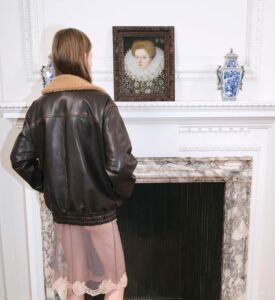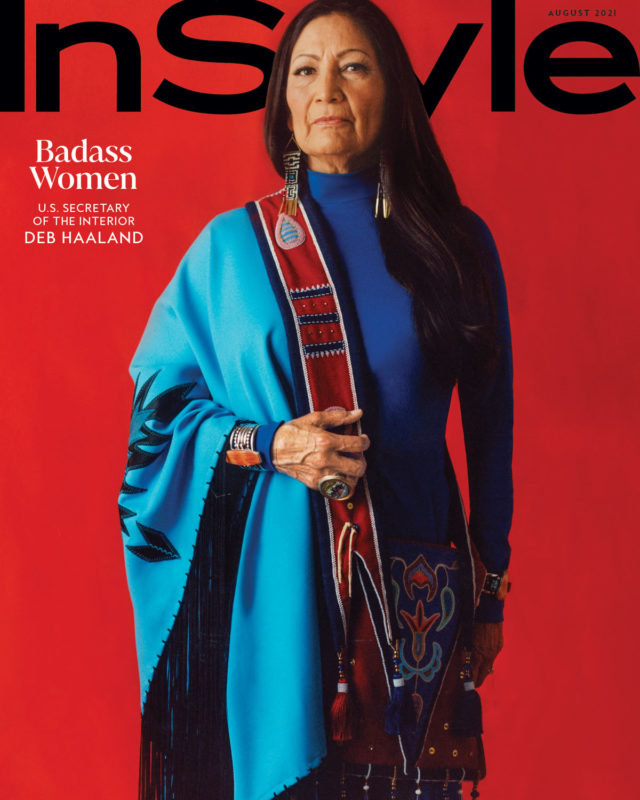This file, when sent to us, was labeled in part “SUBS” — so I think it must be August’s subscriber cover rather than simply an inside photo (which means I don’t get to make a hacky “Secretary of the Magazine Interior” pun), and that we’re getting a different “Badass Women” cover soon. I certainly would have loved to see this on the newsstand, though. Deb Haaland is badass enough for that, and not for nothing, she looks magnificent here in this simple but striking shot. (A bit more Time than InStyle, but who cares? It’s a thousand times better than when they turned Salma Hayek into Rose Byrne.) When representation is a necessary part of the larger conversation, how powerful it would have been to see her on the more widely released issue. Haaland is one of the first indigenous women in Congress and the first to hold a Cabinet position, and I encourage you to read this wonderful piece and also admire the other stunning portraits in it. Haaland talks about her upbringing, her heritage, and the very pointed stylistic choices she made for her swearing-in: traditional Pueblo garb for Congress, and for her secretary position, a ribbon skirt. Also:
Historically, Native women were the decision-makers in their tribes, but since the onset of colonization, they have, in a sense, become invisible. They are the most underrepresented group in an already marginalized community, which makes Secretary Haaland’s position all the more remarkable. “I never really understood what [representation] meant until I became one of the first Indigenous women in Congress,” she says. “And representation truly does matter. In the end, that’s what it’s really about, for people to bring their perspectives to the table. Perspectives that other folks don’t necessarily have or haven’t thought of.”[…]
One of her first acts as secretary involved establishing a Missing and Murdered Unit to pursue justice for Indigenous peoples affected by these tragedies. “A Native woman could be murdered, and it wouldn’t even show up in the newspaper for a week,” says Haaland. “Nobody cared about it.” For the tribal representatives who have visited her office, the sense of relief is palpable. “‘We’re so happy,'” she recalls one leader saying. “‘We don’t have to start with the definition of tribal sovereignty. We can just launch right into our issues.'”
One such issue Haaland took on very recently is that of the tragic discoveries at Canadian residential schools — government-funded boarding facilities run by Christian organizations which, in 100 years of existence, are estimated to have housed 150,000 children for the purposes of stripping them of their native culture and assimilating them, and which subjected them to every kind of abuse. Canada was rocked in May and June by the discovery of mass and unmarked graves of children at the former school sites (251 in B.C. and 751 in Saskatchewan), and is now reckoning with the trauma of the survivors, the grief of the families of the once-missing children, and the chilling knowledge that there are countless more that remain unrevealed. Haaland organized an initiative to investigate the many similar facilities in the U.S., in what many noted was an impressively swift reaction to something happening north of the border AND something which at another time might have been swept aside by those who prefer not to acknowledge that America’s hands have ever been dirty. The Legacy of Hope Foundation in Canada supports the survivors of residential school abuse and their families, and Find Our Lost Children is a fundraiser in support of searching the five residential schools on Vancouver Island. If anyone knows of other organization in Canada, and of course similar charities in the U.S., please list them in the comments.






















